I can't seem to get the standard answer to work. I'm trying to find the new x,y coordinates of a point inside a larger rectangle, after rotating the larger rectangle around its center. (The end goal is to calculate the 4 corners of a collision box inside the larger rectangle.)
The rectangle is 50W x 128H, and the point inside the rectangle is at 15,111. If I rotate this same rectangle 90 degrees clockwise in Photoshop around its center, the point becomes 17,15 inside the rectangle that is now 128W and 50H.
However, if I use the formula I've found 100 times around here for the same question, I get a completely different answer.
import java.awt.*;
public class MyClass {
public static void main(String args[]) {
int width=50;
int height=128;
int cx = width/2;
int cy = height/2;
// should get 17,15
rotateXY(15,111,cx,cy,-90D); // returns 61,85, which is not even inside the image anymore
rotateXY(15,111,cx,cy,90D); // returns -11,66.
}
public static void rotateXY(int x, int y, int cx, int cy, double degrees) {
// x, y - coordinates of a corner point of the square
// cx, cy - center of square coordinates
double angle = Math.toRadians(degrees);
double x1 = x - cx;
double y1 = y - cy;
double x2 = x1 * Math.cos(angle) - y1 * Math.sin(angle);
double y2 = y1 * Math.cos(angle) + x1 * Math.sin(angle);
int rx = (int) x2 + cx;
int ry = (int) y2 + cy;
System.out.println(rx + "," + ry);
}
}
The method I used to rotate the image in java:
public static BufferedImage rotate(BufferedImage bimg, Double angle) {
double sin = Math.abs(Math.sin(Math.toRadians(angle))),
cos = Math.abs(Math.cos(Math.toRadians(angle)));
int w = bimg.getWidth();
int h = bimg.getHeight();
int neww = (int) Math.floor(w*cos + h*sin),
newh = (int) Math.floor(h*cos + w*sin);
BufferedImage rotated = new BufferedImage(neww, newh, bimg.getType());
Graphics2D graphic = rotated.createGraphics();
graphic.translate((neww-w)/2, (newh-h)/2);
graphic.rotate(Math.toRadians(angle), w/2, h/2);
graphic.drawRenderedImage(bimg, null);
graphic.dispose();
return rotated;
}

